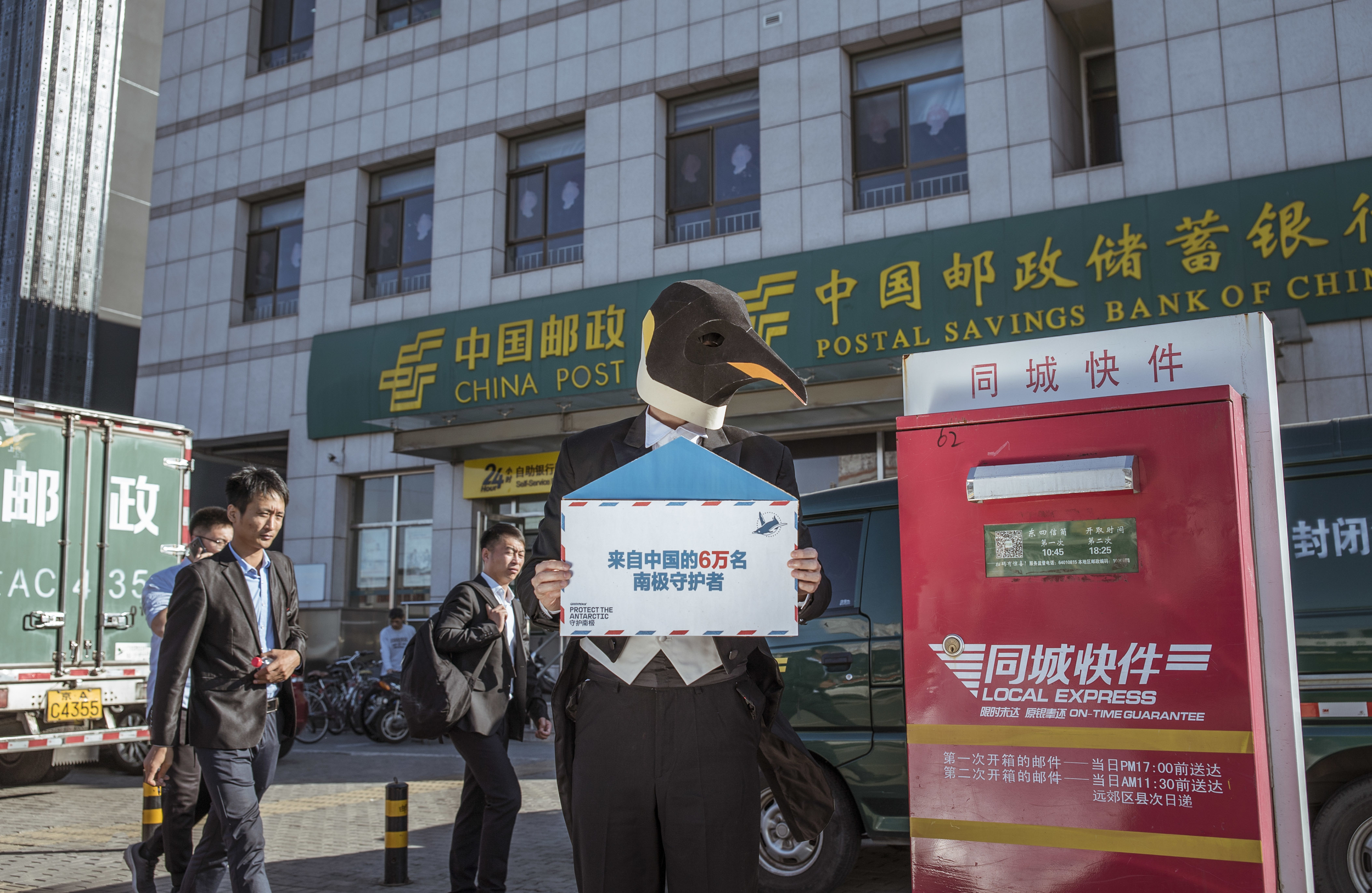In it comes. Code Red smog warning for Beijing. https://t.co/uXKAjwovLS pic.twitter.com/ujz6zqtMaU
— Chris Buckley 储百亮 (@ChuBailiang) December 16, 2016
The capital’s first ever Red Alert was called after a cloud of pollution bigger than Spain settled over Northern China, sparking public outrage, protest art and the usual tongue-in cheek responses from China’s netizens:
Lost in Beijing! Netizens outline iconic buildings that are utterly invisible amid the worst #smog this year pic.twitter.com/j6lYjnwZeQ
— China Xinhua News (@XHNews) December 1, 2015
One year later, the city is preparing for a 5 day smog siege. The red alert will start on Friday night and is predicted to last well into next week. Meanwhile, both October and November saw pollution worsen compared to 2015 levels.So how did we get here, when it was all going so well?
Unsurprisingly, the culprit is coal-burning heavy industry in Beijing’s surrounding provinces. The smog has been building up in steel producing areas south of Beijing in the past week. When the wind direction changed on Friday, the smog began slowly rolling north, with air passing directly through steel clusters in some of Hebei’s most heavily polluted areas, before settling over Beijing.
Why is the pollution getting worse?
Looking back at the data for this year’s pollution, it’s clear that the improvement in air quality is stalling. We first saw a hiccup in the trend of continuous improvement in July, when government data revealed that PM2.5 levels grew in a ⅓ of cities in the first half of 2016:
China’s air pollution got worse in 30% of cities in Q2 of 2016 https://t.co/nDP2KBfPoN pic.twitter.com/uN6GaenKAU
— Greenpeace East Asia (@GreenpeaceEAsia) July 20, 2016
Now, it’s clear to see that PM2.5 levels began to rise again right around March/ April, after steadily dropping for almost 2 years:
The uptick in PM2.5 correlates directly to increased steel production in the Beijing/Tianjin/Hebei area known as Jingjinji. A short term economic stimulus package designed to prop up the economy was released this year, that has boosted steel and cement output. With the increase of steel prices came an expansion of coal-fired production in steel producing areas, and with it, a halt in air quality improvement.
Where do we go from here?
It’s clear that this can’t continue. Years of hard-won progress on advancing air quality and wrestling down PM2.5 levels are being threatened. China needs to accelerate its economic transition away from coal and heavy industry, while pushing harder to enforce emissions limits in cities.



